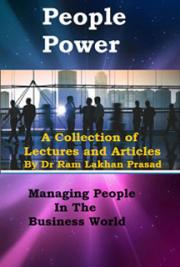Meanwhile, the majority of participants from Villa del Sol were characterized by staunchly middle-class family backgrounds, with professional fathers and stay-at-home mothers. Thus, not only do young people here enjoy a carefree material existence, but they also have access to a high quality education. Needless to say, this in turn leads them to place less emphasis upon innate physical qualities when defining themselves, and more on the acquisition of status symbols, whether money, expensive clothes or a prestigious job.
As we will endeavour to show in the pages that follow, social class (along with gender) is a key determinant of the forms of resistance adopted by young people at any given moment in space or time.
THE SEXUAL CONSTRUCTION OF LATIN YOUTH
175
Resistance by young women in Villa del Mar
During the course of interviews and group sessions involving female participants from Villa del Mar, we were continuously struck by the latter's seeming inability to communicate opinions, feelings and abstract ideas, particularly when these touched upon matters of sex. Even among those who had experienced sexual initiation (which typically occurs between the ages of 11 and 13 for girls living in this community), no one was able to describe the physical differences between men and women, or what distinguishes oral from penetrative sex.
How to explain this state of affairs? While it is true that female youth living in Villa del Mar enjoy limited access to social and educational resources, we would argue that young women's apparent lack of sexual knowledge on a cognitive-critical level is in fact indicative of non-verbal resistance to the tenets of hegemonic discourses.
Thus, even though almost all of the female participants launched into their interview by denying any sexual experience whatsoever, many would subsequently confess to a range of sexual practices, including petting, mutual masturbation and fellatio. Indeed, some went so far as to admit that they had participated in group sex games and other forms of play in which the loser would be obliged to give sexual favours or watch pornographic films. However, despite these admissions, participants would continue to deny that they were sexually active, since they had not engaged in vaginal intercourse.
Still, this is not to suggest that young women's resistance to dominant sexual discourses is uni-dimensional. For example, many are also resentful of the heavy emphasis placed upon biology in sex education classes, along with their teachers' lack of honesty and openness in discussing issues related to human sexuality. As one might imagine, this in turn prompts them to disregard information provided in a school setting, and to make use instead of alternative learning channels, including fashion magazines and television soap operas THE SEXUAL CONSTRUCTION OF LATIN YOUTH
176
Day-dreaming is also relevant in this regard, representing a form of resistance whose scope is, in many cases, directly proportional to the degree of repression suffered by individuals at the hands of their parents or other family members. Drawing liberally upon the plots of romantic novels and movies, young women imagine wildly erotic encounters free of guilt and drudgery, along with miraculous solutions to their economic woes and poor employment prospects.
Moreover, one might argue that involvement in evangelical Protestant churches is another means by which Villa del Mar's young women resist the tenets of dominant discourses.
Although few could identify with precision the liturgical and dogmatic differences between Roman Catholicism and its Protestant counterparts, it was clear - both from the interviews and through ethnographic observation - that the new churches are especially popular with women.
Why is this the case? In the first instance, it is clear that many dislike the misogynous attitude that permeates all aspects of Catholic worship, and thus have turned to Protestantism because it offers greater scope for female involvement in church activities, including its governance structure. Furthermore, young women also appreciate the firm stance adopted by evangelical churches on male sexual impropriety, seeing it as a powerful counterweight to the double standards inherent within prevailing patriarchal discourses.
Finally, it should be emphasized that, among those whom we interviewed, there was a close correlation between opposition to dominant discourses and identification with more masculines roles and behaviour. Raquel is a case in point. Having been raised in a family of boys, and allowed to play and experiment alongside them, she has grown up to become a young woman who is neither fearful of decision-making nor of openly challenging the restrictions and prohibitions placed upon her as a member of the 'weaker' sex.
Resistance by young men in Villa del Mar
THE SEXUAL CONSTRUCTION OF LATIN YOUTH
177
Like their female counterparts, male adolescents in Villa del Mar have adopted a range of strategies in order to make manifest their opposition to the tenets of hegemonic discourses.
Certainly the most visible of these is the habit many have adopted of wearing their hair long, piercing and tattooing their bodies, and choosing clothes that highlight their muscles and tanned skin. Needless to say, these fashion statements are meant to underscore young men's disdain for Christian notions of modesty and chastity.
In similar fashion, it is quite common for male adolescents to express their hostility towards the Church and the mainstream values it represents by refusing to go to mass, or by calling into question the moral integrity of priests and other religious officials. Indeed, male youth find few pastimes more entertaining than recounting stories of sexual abuse or impropriety perpetrated by those whom they sarcastically refer to as 'God's representatives on earth'.
As we will endeavour to show in the following section, young men's strategy of focusing upon priests' hyperactive libidos and sordid sexual encounters stands in marked contrast to the approach favoured by their counterparts in Villa del Sol, where it is far more common to use logic as a basis upon which to uncover hypocrisy and contradiction within religious institutions and the individuals who represent them.
Meanwhile, male participants whose fathers have abandoned their families and left their mothers to raise the children single-handedly will often adopt views and opinions that run directly counter to predominant gender discourses. For example, Alberto described his mother as 'both the man and woman' as far as household management is concerned, as well as noting that she is the only breadwinner in the family.
Needless to say, this has made him exceedingly sensitive to others' comments that women are incapable of engaging in anything more strenuous than housework. As he put it, 'what's really unfair is the way women get billed as the weaker sex, as though they were made of glass while men are made of iron.' For Alberto, individuals who subscribe to such a view are ignorant, as are those who treat their wives as 'objects or 'slaves'.
THE SEXUAL CONSTRUCTION OF LATIN YOUTH
178
As for matters touching directly upon sex and sexuality, young men in Villa del Mar are no less vocal in their resistance. Thus, with respect to sex education classes in particular, many will endeavour to show their contempt for the course material by laughing and joking continuously, and by poling fun at anyone who appears to be genuinely interested in what the teacher has to say. Indeed, from this perspective it came as no surprise to us when several female interview participants came forward to complain about their male counterparts, suggesting that they were more interested in making a mockery of the process than actually educating themselves in matters touching upon reproductive health and human sexuality.
Of course, it is also common for young men to challenge prevailing sexual mores and values by expressing their sexuality through illegitimate channels, such as premarital intercourse, masturbation, bestiality, homosexuality and group sex. Indeed, particularly interesting in this regard is the notion of 'friends with rights', in essence an unconventional sexual relationship in which neither party makes a commitment to the other. In this way, by turning mainstream views on dating and marriage on their head, young people engage in a form of group resistance to hegemonic discourses that emphasize purity, fidelity and virginity.
Moreover, also pertinent in this regard is the willingness with which young men transgress place- and time-based taboos on sexual activity, for example by engaging in intercourse during daylight hours or in public spaces. To cite but one example, Kenneth reported having friends who go to the beach everyday after school, armed with binoculars so that they might spy on other young couples (whether hetero- or homosexual) who are in the midst of a discrete sexual encounter.
Along similar lines, several male participants indicated that they went out of their way to befriend members of 'deviant' sexual minorities, including female sex trade workers, transvestites, gays and lesbians. Indeed, many also showed themselves to be remarkably willing to defend prostitutes' right to practice their trade, arguing that the Church's condemnation of commercial sex fails to pay adequate heed to the social realities in which many of these women find themselves. As with other practices that run counter to prevailing assumptions and values, participants' objective in voicing such an opinion was to register opposition to sexual mores that circumscribed and limited expressions of their own sexuality.
THE SEXUAL CONSTRUCTION OF LATIN YOUTH
179
Finally, one might argue that the numerous young men who indicated to us that they are planning to leave Villa del Mar, either to pursue post-secondary studies or in the hope of finding better paid work in other cities, are also engaging in a form of resistance, whereby dominant community values are self-consciously rejected or called into question. Thus, rather than aspiring to become 'real' men whose masculinity is expressed through their physical prowess or domination of others, these individuals are endeavouring to construct an alternative identity, founded upon such pillars as educational attainment or financial prosperity.
Resistance by young men in Villa del Sol
In light of the stark socio-economic differences that distinguish the two communities from each other, it is not particularly surprising that young men living in Villa del Sol do not challenge dominant discourses in the same way as their counterparts in Villa del Mar. Whereas members of the latter group tend to express resistance through their bodies, the former are far more likely to make use of critical thinking as a means of undermining mainstream values.
Indeed, one might even go so far as to suggest that superior reasoning skills play much the same role as strength and virility in Villa del Mar, communicating to others that one is worthy of respect, while at the same time providing the basis for displays of rebellion and resistance.
In many respects, Santiago is typical in this regard, using logic and reason in a bid to counter the seemingly unstoppable forces that have served to turn his life upside down. The son of recently divorced parents, he lives alone with his mother, who depends on her ex-husband's modest support payments to make ends meet.
Given the acrimonious circumstances that surrounded the break-up, including spousal abuse and sexual infidelity on the part of his father, Santiago is understandably bitter. In short, not THE SEXUAL CONSTRUCTION OF LATIN YOUTH
180
only did he blame his mother for initiating divorce proceedings, but he also began to feel ashamed, dirty and contemptuous of the Christian God that had, in his eyes, failed him. As a way of underscoring his disenchantment, he turned his back on Christianity, focusing his reading instead upon the writings of Charles Darwin, along with the holy texts of any number of Eastern religions.
However, at a certain point his criticism of the Roman Catholic Church became so forceful that his mother, father and teachers began to take notice, punishing him severely for giving voice to such heresies. This in turn prompted him to use 'logic' once again in an attempt to resolve this latest crisis, indicating to us in an interview session that his studies had led him to the realization that 'all scientific evidence points to the Christian Bible's unfailing accuracy,' and that it was God, rather than the man from whose sperm he derives, who is his true father.
In similar fashion, when Aaron was recently faced with his father's death and subsequent community disapproval of his mother for becoming involved with another man, both he and his older brother felt compelled to interrogate convictions and assumptions they had long taken for granted. While it was precisely this latter process that caused his brother to adopt a strict atheist perspective, Aaron himself has become considerably less zealous in his faith, arguing that Christianity must be guided by intelligence, reason and flexibility if it is to remain relevant in the modern era.
Moreover, male participants in Villa del Sol also used critical thinking to expose contradictions in other hegemonic discourses, with Guillermo in particular arguing that sexism is both 'silly' and
'unfair'. As he put it, 'why must only women remain virgin before marriage? If the woman has to, the man should do the same.' However, by the same token it should be noted that the use of logic in resisting dominant models and assumptions is restricted primarily to individuals who are experiencing significant problems in their lives (such as the divorce of their parents); others are more likely to use critical thinking on behalf of the status quo, rather than against it.
Resistance by young women in Villa del Sol
THE SEXUAL CONSTRUCTION OF LATIN YOUTH
181
In important respects, Villa del Sol's young women are similar to its young men. That is to say, they complain of the same communication problems with their parents, and are no less aware of the Church's deep-seated influence over many areas of social life. Moreover, they also tend to be articulate, expressive and self-confident, qualities that distinguish them in no uncertain terms from female adolescents in Villa del Mar.
While one might argue that young women in Villa del Sol challenge the tenets of dominant discourses in a number of significant ways, for example by using critical thinking to expose discursive contradictions ( ie. in a fashion similar to that of their male counterparts), or by refusing to adopt a 'feminine' appearance ( eg. short skirt, nail polish and high heels), others, such as Nidia, have gone further in their resistance.
How so? Quite simply, not only does she refuse to conceal the fact that she is an atheist, but her criticism of the elitism, corrupt practices and misogynous outlook of the Roman Catholic hierarchy is at once damning and eloquent:
How can you respect the pope when he carries a diamond-studded cross and proclaims his love of simplicity when he kisses a child in Somalia but doesn't care whether the child has got enough to eat? In addition, why is it that we've never seen a female pope, a black pope, a Latin, Asian or African pope? They've all been white Europeans who've spent their whole life in Rome.
If these charges were not serious enough in themselves, Nidia went on to identify other areas in which she believes the Church to be dangerously out of step with present-day realities. In her view, nowhere is this more evident than in the field of women's rights, which continue to be trampled upon with impunity by a religious hierarchy that appears bent on preserving white male privilege regardless of the cost to anyone else.
THE SEXUAL CONSTRUCTION OF LATIN YOUTH
182
Moreover, even though she often feels intense shame when she looks at herself in a mirror, she is open with her feelings and frank when discussing her sexuality. Needless to say, this is an important point, for it underscores the degree to which Nidia is attempting to fashion for herself a sexual identity that is based upon honesty and self-awareness, rather than guilt and self-hatred. Let us hope that more young people follow in Nidia's footsteps.
THE SEXUAL CONSTRUCTION OF LATIN YOUTH
183
XIII
Sexual Culture and Alternative Approaches to
AIDS Prevention
The monolithic and self-perpetuating character of hegemonic discourses is such that religious dictates, along with gender roles and sexual orientation, are widely understood to be non -
negotiable absolutes. However, in examining processes involved in the development of gender identities and sexual orientation among adolescents, recognizing how discourses have constructed rules, norms, explanations, expectations and sexual practices has served to illustrate the differences present in hegemonic discourses and, in so doing, has challenged the indissoluble nature of “sexuality”. However, rather than overtly resisting and rewriting the discourses on sexuality, young people frequently adopt what we have termed co-existence behavior ( ie. they engage in conflict-resolution strategies that do not address the root of the problem).
In Costa Rica, co-existence behavior has taken on a number of different forms in its hidden resistance to sexual discourses, in the process contributing to the difficulties inherent in AIDS
prevention work among the country's adolescent population. Manifesting itself in censorship, internal watchdog mechanisms, compartmentalization, magical-religious thought, sexual and economic violence and escape mechanisms, this type of behavior seeks to redress contradictions among the dominant discourses, yet in the end only provides temporary solutions to long-term problems.
Barriers to AIDS prevention
Censorship
THE SEXUAL CONSTRUCTION OF LATIN YOUTH
184
Having defined it as an attempt to hinder the free flow of information as a means either of limiting resistance to dominant discourses, or of preventing the emergence of alternative ones, censorship is clearly one of the key barriers in the way of an effective AIDS prevention strategy in Costa Rica. Spearheaded by the Roman Catholic Church, in association with particular elements within the media and public at large, there has been a concerted attempt to censor material dealing with pre-marital sex and AIDS-related topics by staunchly opposing any moves to include the latter on the sex education curricula of the public school system. However, while this censoring may prevent an attack on dominant sexual values and mores, it also silences debate on alternatives open to young people who are sexually active or who have questions concerning their sexuality.
Interestingly, this attempt to stifle potential resistance to the dominant religious paradigm has not been extended to the romantic or gendered constructions of sexuality. Rather, the popularity (and availability) of romantic novels, films and pornography has if anything increased, perhaps because these discourses do not pose a threat to dominant modes of thought, as the messages they disseminate serve to reinforce the religious understanding of sexuality.
Nonetheless, for as long as the dominant ideology remains unquestioned, and sex education remains unavailable, young people will continue to fall prey to unwanted pregnancies and HIV
infection in this country. As it stands, they are internalizing a set of values which lead them to believe that active penetration is superior to passive penetration, and that God does not punish good Christians. Of course, once such views have been assimilated, one can hardly expect adolescents to be in a position to make the choices that will allow them to lead healthy, fulfilling sexual lives.
Internal watchdog
Discipline is another means of silencing resistance and contradictions. Through this process, young people learn to police their own behavior, and thus do not have to rely on external forces to keep them 'in line'. In this way, whenever individuals engage in an activity that, upon reflection, falls beyond the bounds of respectability, their 'internal watchdog' is invoked, inducing feelings of guilt and suppressing memories of the offending act. Examples of such behavior include childhood sexual games, along with instances of homosexual contact with friends and companions of the same sex.
THE SEXUAL CONSTRUCTION OF LATIN YOUTH
185
However, forgetting is not the only mechanism employed to protect oneself from the consequences of sexual transgression. Denial is also used in this regard, most notably by cacheros who have sexual relations with other men yet do not consider themselves gay. Of course, among the consequences of these 'internal watchdog' mechanisms is the tendency to downplay (or deny altogether) the risks associated with unsafe sex and, at a more general level, to fail to learn from one's sexual experiences. All too often, young people, having 'discovered'
sexual urges within themselves, attempt to satiate these desires without having the slightest consciousness of AIDS prevention strategies or family planning methods.
Thus, instead of giving youth the tools with which to take responsibility for their actions, hegemonic forces attempt to control the latter's bodies through fear, guilt, disgust and shame.
In this way, the Church, by condemning all expressions of sexuality that are not directly related to procreation, has made young people ashamed of their sex organs, and feel disgust at any
'illegitimate' sexual act, be it masturbation, cunnilingus, petting or kissing. Moreover, as the interviews and group sessions have shown, this shame is also felt when individuals go to the store to buy condoms and other birth control devices. As one might imagine, this is largely because the latter are associated either with homosexual or non-procreative sex, thereby invoking guilt and fear of punishment among the young people involved.
Magic-religious thought
In many cases, the proponents of hegemonic discourses attempt to erase contradictions by demanding that individuals engage in autos da fé, in other words that they accept discursive premises on the basis of faith alone. Mary's immaculate conception and Christ‟s resurrection provide obvious instances of Christianity's magic-religious orientation. In effect, these attitudes invoke supernatural explanations for natural events, 'resolving' contradictions and tensions by placing them outside of the human realm and in that of magic-religious thought.
While every society has been influenced to some extent by its magic-religious belief system, in Costa Rica this discourse is still overwhelmingly dominant despite the existence of substantial antagonism and contradiction vis à vis other discourses. Should confirmation of this claim be THE SEXUAL CONSTRUCTION OF LATIN YOUTH
186
required, one need only consider the fact that Costa Ricans, particularly those who are fundamentalist, widely assume that supernatural forces influence most facets of their lives.
Even those who are not devout share these views, and thus it should come as no surprise that many young people believe that gods and devils are intimately involved in their decisions to have intercourse, engage in sexual violence, use condoms, watch pornography, or have multiple partners.
Of course, in adhering to such a belief system, individuals are absolved of personal responsibility for their actions. When a 'mistake' is made or the bounds of 'legitimate' behavior transgressed, the perpetrator can excuse him or herself by arguing that a supernatural being had influenced, or even made, the decision to act in a particular way. As such, if a person has sex with while in love, he or she can claim that the hand of a god lay behind this action, and thus explanations need not be sought. Similarly, in the event of rape or sexual abuse, individuals will often attempt to justify their actions by claiming that they had been swayed by the Devil. While, this is not to suggest that there is no room for autonomous decision-making, young people quickly learn that this is neither the only nor necessarily the best way to justify oneself.
With respect to personal relationships in particular, adolescents have internalized the belief that
'scientific thinking' is inappropriate for people who are in love, lest they be considered unromantic or insincere. In this way, young people are often convinced by the argument that partners should be chosen on the basis of physical attraction alone ( ie. Cupid's arrow), and not because of intellectual or personal compatibility. Needless to say, such a perspective does not lend itself to frank discussion concerning the causes of AIDS and prevention strategies, since sexual intercourse is perceived to be a 'magical' space of gods







